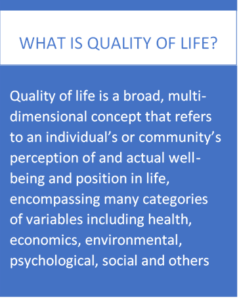Julia M. Nagy, ENV SP
Managing ConsultantJulia Nagy is a Senior Consultant in HMMH’s Aviation Services practice. She is a dynamic member of the HMMH team, with…
View Bio» | Read More From this Author»
The COVID-19 pandemic has forced airports across the U.S. to pivot from standard protocols and quickly innovate to maintain safe spaces for both their own staff and the traveling public. While the industry grapples with charting a path to recovery, there is an emerging opportunity for airports to take a holistic look at their impacts on local communities, build stronger social connections, promote equity, and celebrate diversity. As the effects of the pandemic continue to unfold, maintaining airport longevity and gaining public confidence will be dependent on unconventional outreach efforts.
 Due to their position as transportation and economic hubs, airports have the unique opportunity to not only support their communities but also to represent the values of their communities. To do this, airports must gain a more comprehensive understanding of what is most important to their surrounding communities and what factors contribute most heavily to their quality of life (QOL).
Due to their position as transportation and economic hubs, airports have the unique opportunity to not only support their communities but also to represent the values of their communities. To do this, airports must gain a more comprehensive understanding of what is most important to their surrounding communities and what factors contribute most heavily to their quality of life (QOL).
Many U.S. airports routinely study their impacts on certain components of QOL, such as economic impacts (e.g. jobs created or supported) and environmental impacts (e.g. noise exposure). However, it can be challenging or impractical to combine the results of multiple studies, conducted over varying timelines in support of differing goals, into a cohesive analysis that can be readily used by airport leaders to make decisions.
To address this challenge, HMMH led an Airport Cooperative Research Program (ACRP) project, along with our research partners ERG, to provide airports with a framework for measuring the quality of life of their surrounding communities. It includes indicators in six broad categories: Economic, Environmental, Health, Social Relationships, Transportation, and Local Governance and Community Services.
The resulting QOL assessment framework will serve as a means for airports, communities, and other stakeholders to assess overall QOL and understand how certain aspects of QOL may be affected by airport-related activity. This information will be a useful tool to help inform airport decision-making, planning, and design processes, and assist with stakeholder engagement activities. ACRP published Report 221: Measuring Quality of Life in Communities Surrounding Airports in August 2020.
The ACRP Guidebook will provide direction to airports on how to conduct a QOL assessment via a tiered approach, through which both airports and their stakeholders accrue benefits from each sequential step. For example, completing the first step of the assessment requires a series of internal conversations within the airport about QOL and encourages airport staff to think more broadly about how airport decisions affect surrounding communities. As the steps progress, the depth and breadth of the communications with stakeholders advance, culminating in the development of a full-scale QOL assessment.
As the industry moves forward through an unparalleled global health crisis, it is especially timely for airports to take a step back and ensure that they are meeting the evolving needs of the communities that support them. As echoed in the recent Airports Council International – North America (ACI-NA) COVID-19 Recovery Recommendations report, airports should be prepared to undertake a variety of “airport actions and good practices” beyond the necessary funding, legislative, and regulatory changes needed to facilitate safe travel throughout the COVID-19 pandemic. One example includes the need “to address new noise and other community concerns.” As a recognized leader in aviation noise modeling, documentation, and related public outreach facilitation, HMMH is experienced at helping our airport clients understand and address their noise impacts. We are eager to merge our existing expertise with the results of our ACRP research to support our clients in obtaining a broader picture of their impact on overall QOL.
We look forward to speaking with you more about the QOL assessment framework. Please reach out to Katherine Preston, HMMH Principal Consultant and Principal Investigator on ACRP 02-83 Project: Measuring Quality of Life in Communities Surrounding Airports, for additional information.